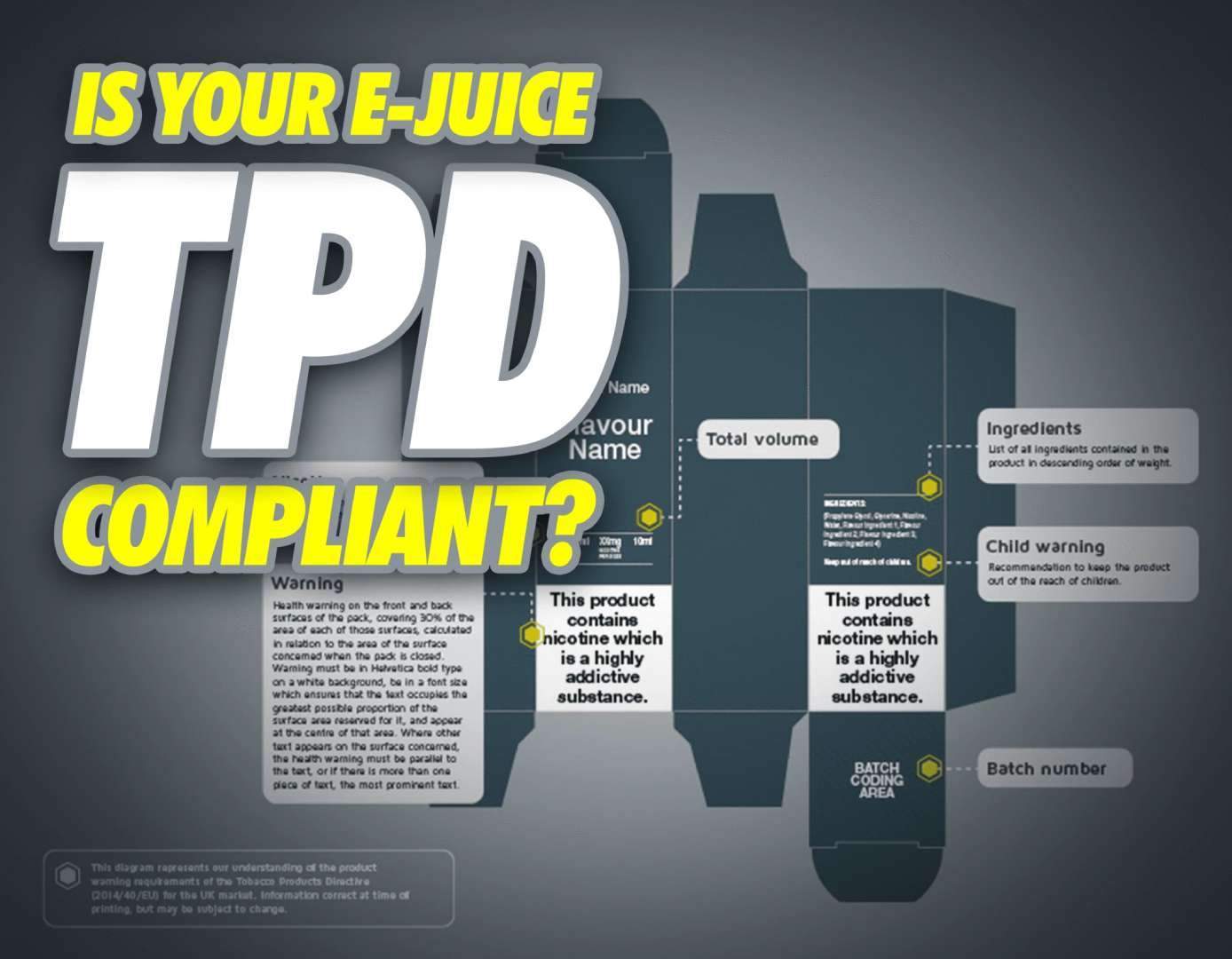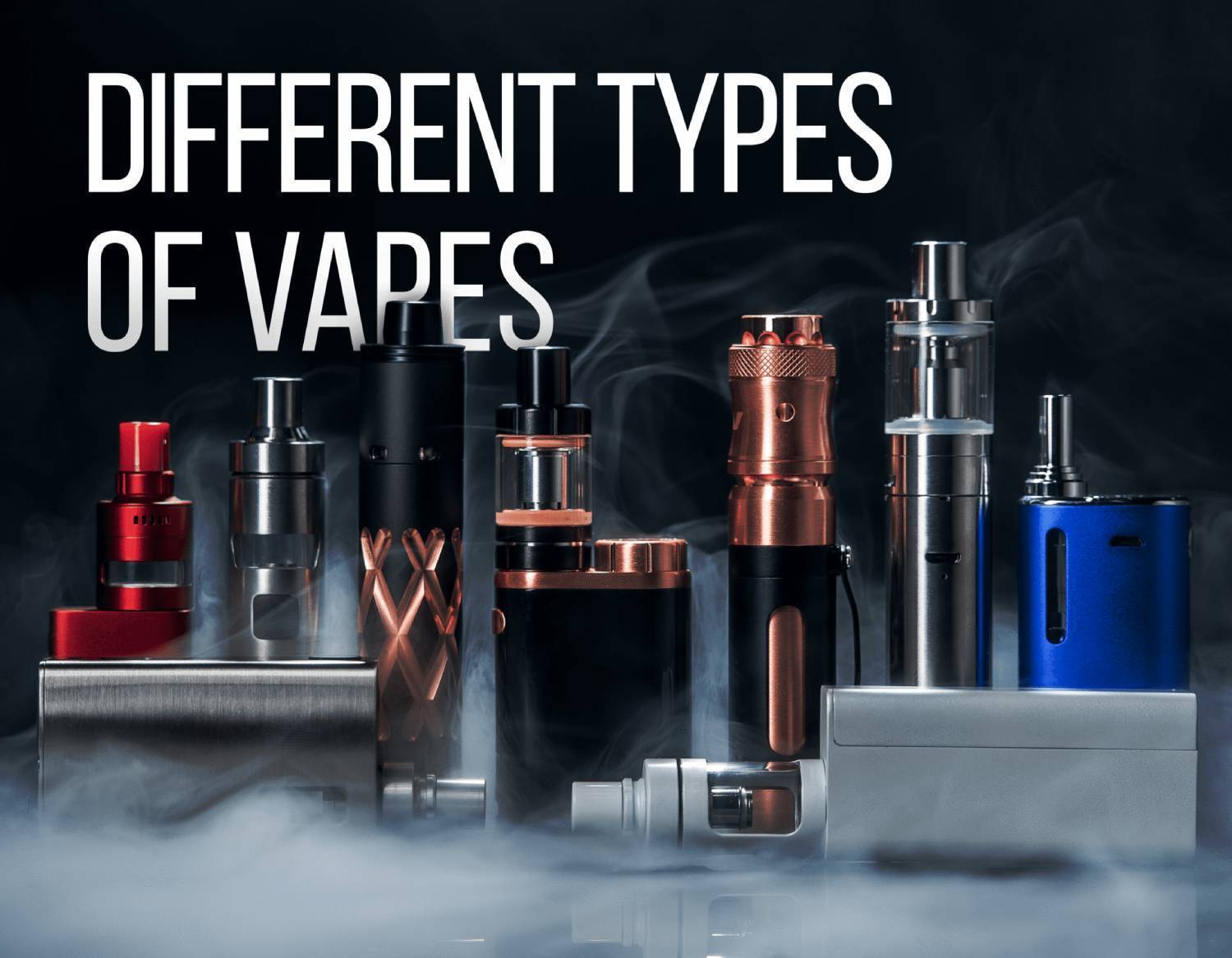Tobacco Product Directive (TPD) is a regulatory act in the European Union placed on the sales of tobacco products including e-liquids and vaping devices. As of May 20th of 2016, TPD compliance is in full effect wherein manufacturers, retailers, and vapers must follow the guidelines laid out in the TPD Article 20.
In this article, we will show you how TPD affects you (Manufacturers, Retailers, and Consumers) and what you can do to be TPD compliant.
What is the purpose of TPD?
TPD exists for three primary reasons:
1. Protecting children from nicotine products
2. Protecting consumers by creating enforceable standards for the safety and quality of all e-juices and vaping devices
3. Protecting consumers by requiring manufacturers and retailers to provide useful information on packaging
Regulation is inevitable in an emerging industry affecting millions of consumers. Whether we agree or disagree with the rulings of TPD, we must work with what we have.
How to be TPD Compliant
TPD affects everyone: manufacturers, retailers, and consumers. Let’s go through the key rulings that you must follow to be TPD compliant.
1. Register with MHRA
All e-liquids and vaping devices must notify and register with the Medicine and Healthcare Products Regulatory Agency (MHRA) 6 months before they can be sold. This includes existing vape products before May 20th, 2016.
Follow these instructions to register.
2. Product Restrictions: E-liquid and Vaping Devices
- Emissions testing is required for e-liquid with nicotine and must be tested in a certified lab
- Vaping devices cannot have an e-liquid capacity of more than 2 ml
- Each E-liquid bottle containing nicotine is restricted to 10 ml per bottle
- Nicotine strength in e-liquid cannot exceed 20 mg/ml or 2.0% nicotine
- Cannot include certain ingredients such as colorings, caffeine, and taurine. Other ingredients deemed unsafe can also be banned by voting members of the EU.
3. Packaging and Labeling
- Child resistant and tamper evident bottling. Furthermore, the bottle must be unbreakable.
- The nozzle of the bottle must be at least 9 mm long and cannot emit more than 20 drops per minute.
- Necessary to include warning leaflet in the packaging
- Specific warning labels must be placed on the packaging
- “This product contains nicotine which is a highly addictive substance” needs to be labeled on packaging. It must also cover 30% of the package surface on the front and back.
4. Restricted Advertising
The rules on promotion and advertising may be different depending on the individual country in the EU.
What is not allowed for e-juice and vaping device promotions:
- TV, On-demand TV, and Radio
- Product Placement
- Newspaper/Magazines/Periodicals
- Display Advertising on the internet
- Cold calls: marketing emails and text messages
- Social Media Marketing
What is allowed for e-juice and vaping device promotions:
- Trade Publications: Trade magazines and Trade Shows
- Factual information about products such as ‘How-to’ videos, blogs, tweets, and non-paid reviews
- Leaflets
- Posters
- Billboards
- In the UK, non-nicotine liquids, non-nicotine disposable e-cigarettes, non-disposable devices that only take non-nicotine e-liquids can be advertised
For more detailed information, read UK’s TPD Advertising Restriction Resource.
According to the Committee of Advertising Practice (CAP) Section 22, here are some important marketing guidelines to follow in the UK:
- Ads must be socially responsible
- Ads must not target children, feature children, or include content that appeals to children
- Do not make safety or health claims
- Ads cannot claim or imply smoking cessation
- Do not make misleading claims about product ingredients
Frequently Asked Questions:
What are shortfills?
Shortfills are used to bypass TPD regulations by sending 0% nicotine e-juice filled short so consumers can put their nicotine liquid or nicotine shot in the e-juice bottle. It’s also referred to as ‘mix and vape’ since vapers mix the nicotine liquid into a shortfill e-juice bottle.
Why can’t I get TPD compliant e-juice bottle in my country?
Although an e-juice may be TPD compliant, it may not be allowed in a specific country in the EU. This is because TPD is an umbrella regulation imposing minimum standards for each member of the EU. Individual members in the EU may have more specific conditions that are necessary to be met to be compliant in their respective country.
Does TPD make e-juice healthier?
The short answer is no. Due to the required emissions testing, consumers can have confidence in knowing what is in their e-liquid.
What we covered is a brief overview of TPD compliance. For more details regarding TPD, feel free to ask us questions in the comments or email us through our contact us page!





Leave a comment
All comments are moderated before being published.
This site is protected by hCaptcha and the hCaptcha Privacy Policy and Terms of Service apply.